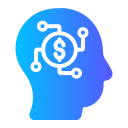AI-Based Decision Making for Non-Profit Management
Transforming Strategic Planning with AI
Data-Driven Priority Setting
AI tools excel at synthesizing disparate data sources to reveal which programs or initiatives deliver the greatest impact. Machine learning models can analyze historical project performance, funding streams, and community feedback to determine which efforts should be prioritized. This not only boosts overall mission effectiveness but also increases accountability to stakeholders and funders. As a result, boards and executive teams can focus on areas that promise the highest return on investment for their communities.
Scenario Modeling and Forecasting
With AI-powered scenario modeling, non-profits can simulate a range of future conditions, from shifts in donor behavior to changes in policy or economic downturns. Predictive analytics allow organizations to assess the potential outcomes of different strategies before implementing them, reducing risk and maximizing resources. This foresight ensures that organizations are better prepared for uncertainties and can devise contingency plans based on robust, real-time data simulations.
Resource Allocation Optimization
Optimal allocation of limited resources is a perennial challenge for non-profits. AI algorithms can process real-time data on expenses, program needs, and personnel capabilities to recommend the most effective distribution of funds and staff. These systems can also flag inefficiencies or detect gaps in current resource usage, enabling leadership to reallocate budgets swiftly and with confidence. The end result is a more efficient, impact-driven organization that stays focused on its mission.

Personalized Donor Outreach
AI-driven platforms analyze donors’ past interactions, preferences, and giving histories to craft highly personalized outreach messages. Instead of generic appeals, supporters receive communications tailored to their interests and motivations, significantly increasing engagement rates. This level of personalization fosters ongoing donor loyalty and encourages higher contributions, providing a steady funding base that empowers sustainable growth.

Predictive Fundraising Campaigns
Through predictive analytics, non-profits can determine when and how to best approach different donor segments. Machine learning models can forecast which supporters are most likely to respond to a specific campaign, how much they might give, and which communication channels they prefer. With these insights, organizations can allocate campaign resources efficiently, maximize returns, and reduce the risk of donor fatigue.
Enhancing Program Effectiveness and Outcome Measurement
Real-Time Impact Tracking
AI systems are invaluable in tracking the real-time impact of non-profit programs. By integrating data from surveys, sensors, and external sources, organizations can monitor the immediate effects of their interventions. This continuous flow of information allows for rapid adjustments to ongoing projects, ensuring that services remain relevant and effective for the populations served.
Automated Evaluation and Reporting
Automating data collection and reporting processes frees staff from time-consuming manual tasks while boosting accuracy and consistency. AI platforms aggregate data across various initiatives and generate detailed reports that highlight successes as well as areas for improvement. This enables non-profits to quickly demonstrate efficacy to funders, partners, and communities, reinforcing their credibility and transparency.
Adaptive Program Monitoring
AI-powered systems excel at identifying subtle trends or outcomes that may be missed by human analysts. By continuously assessing program data, these systems can suggest modifications or interventions to improve future performance. Organizations benefit from proactive recommendations that enable adaptive management, fostering a culture of continuous learning and iterative improvement.
